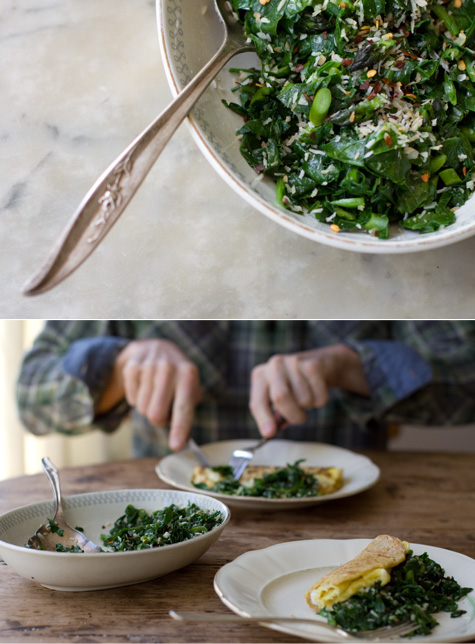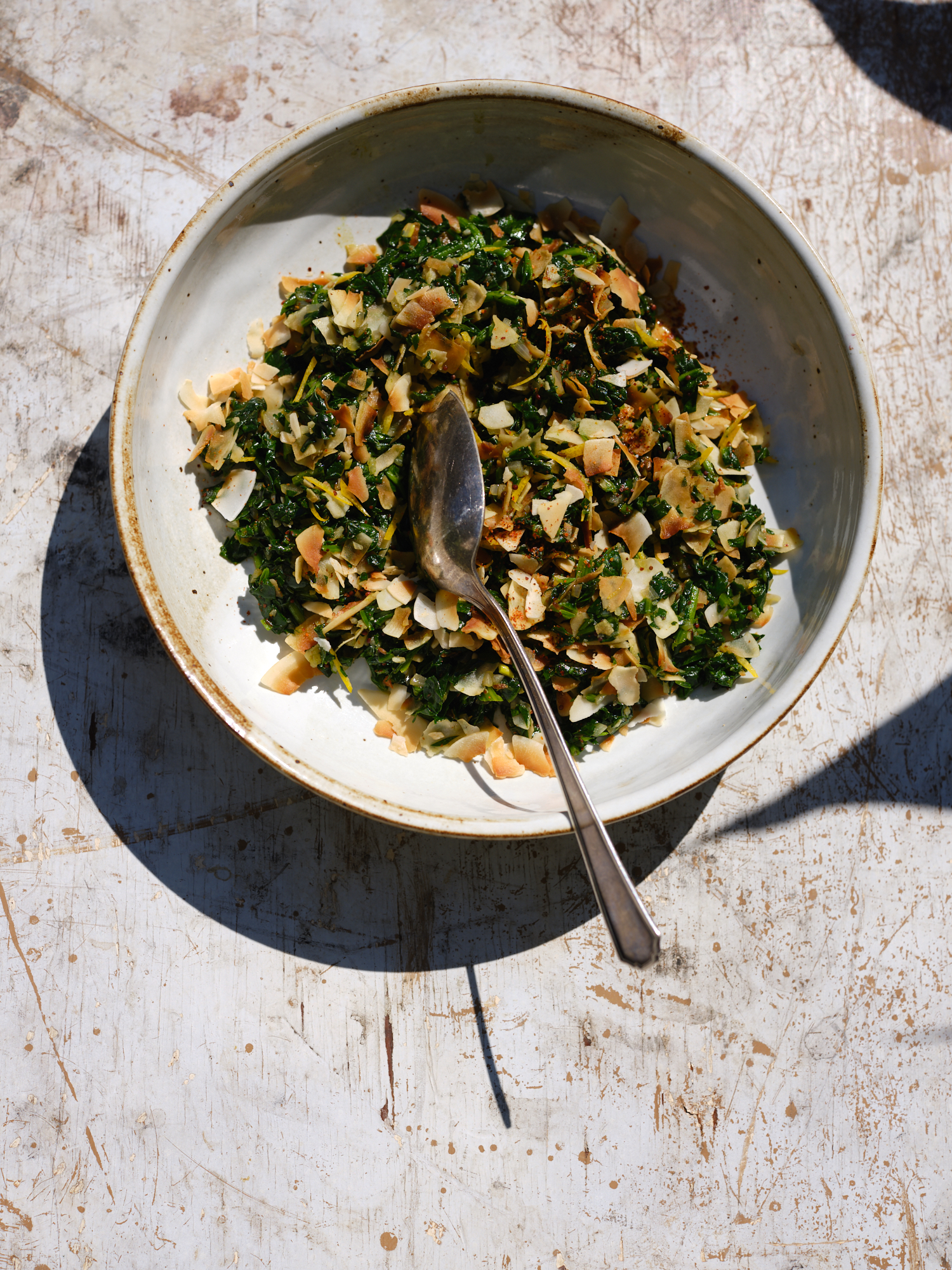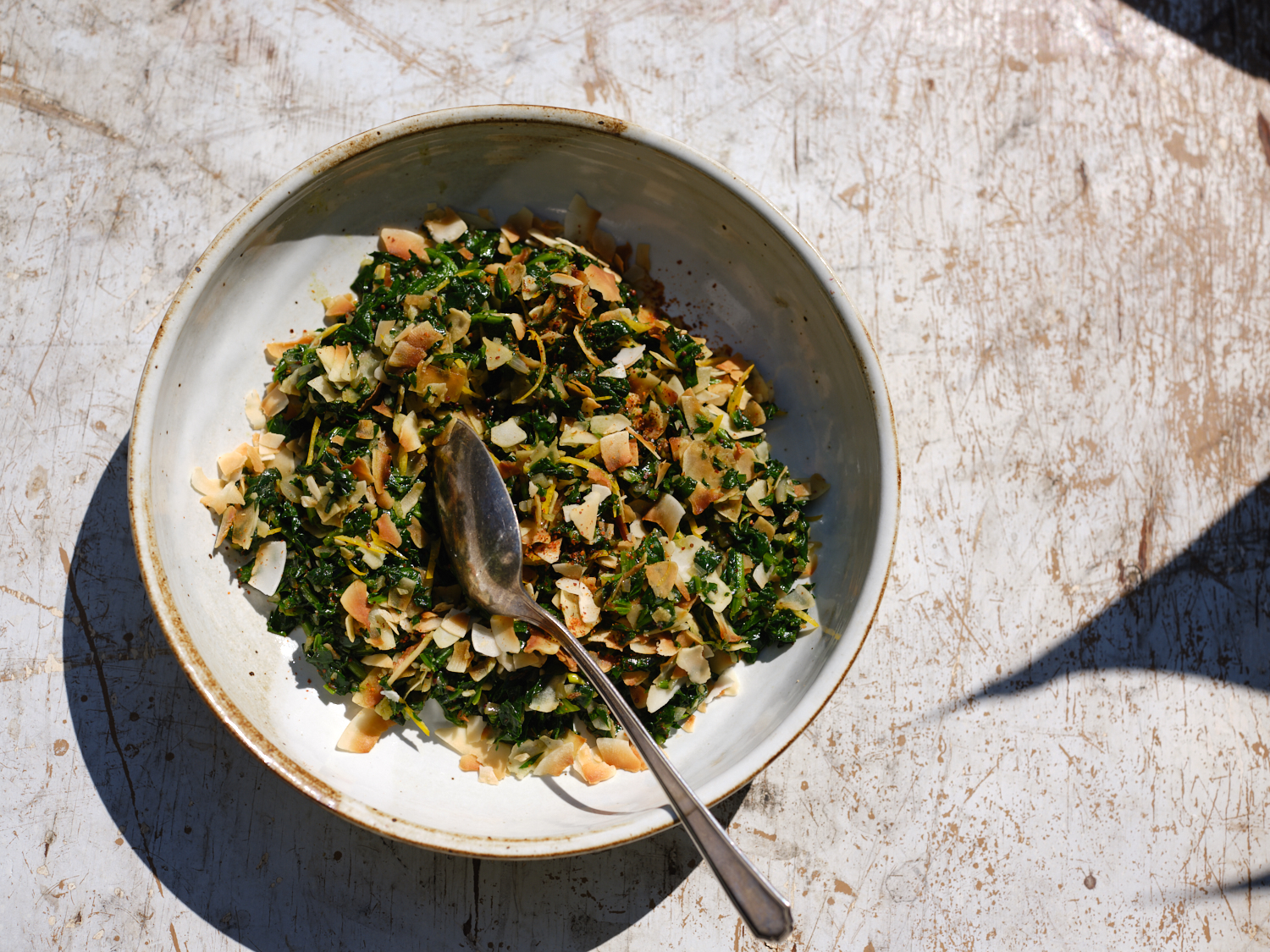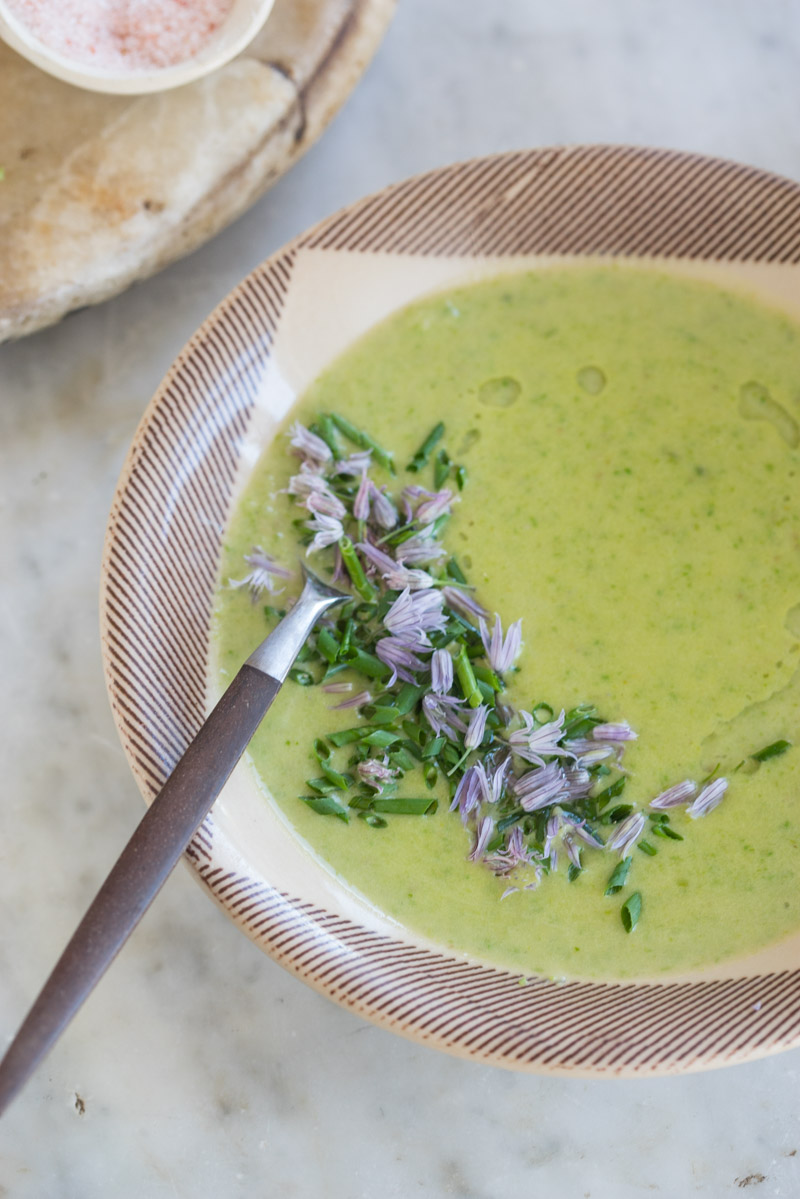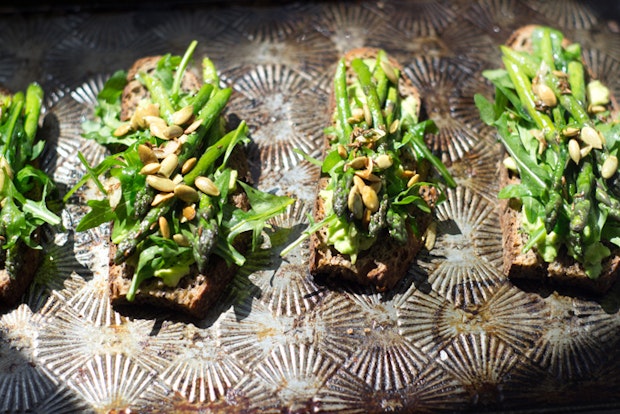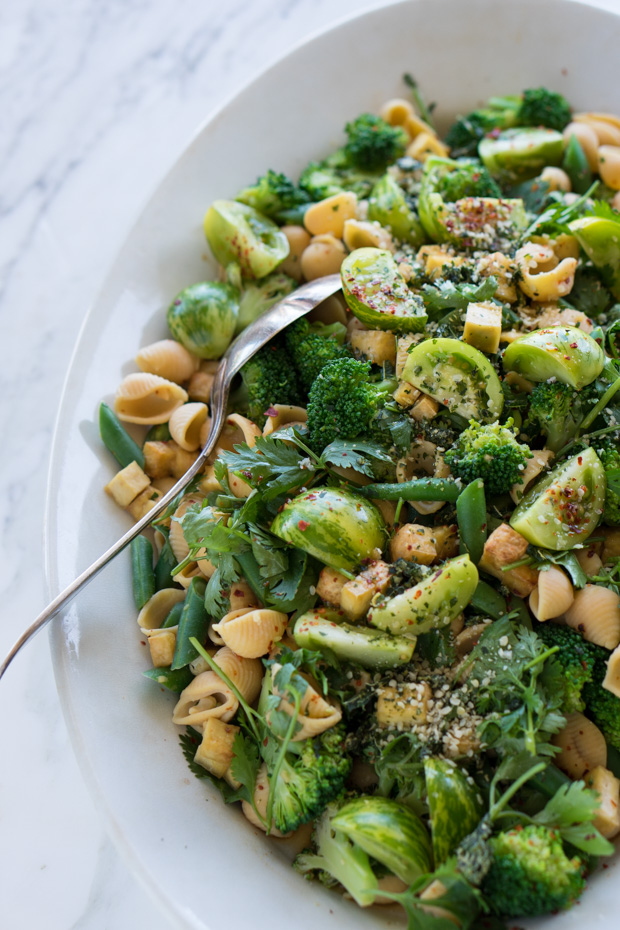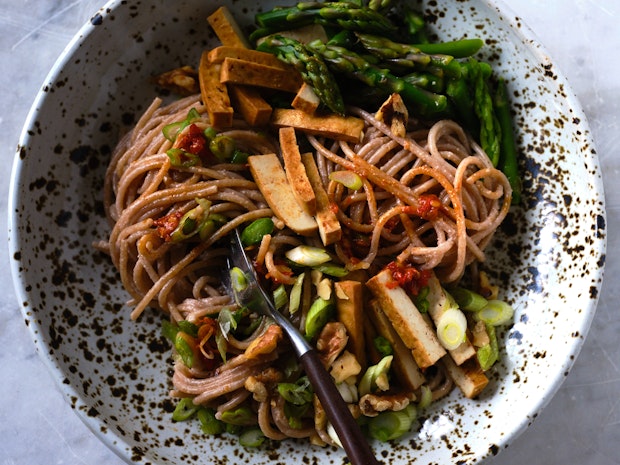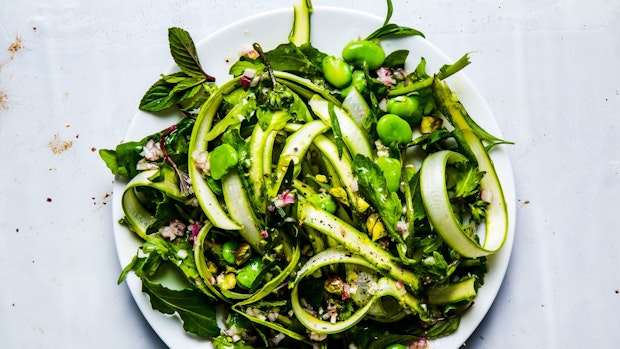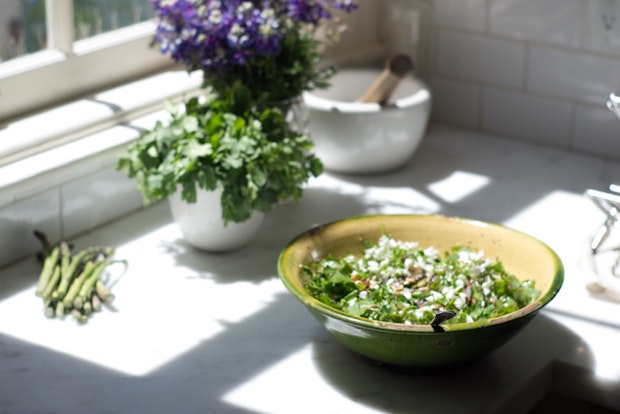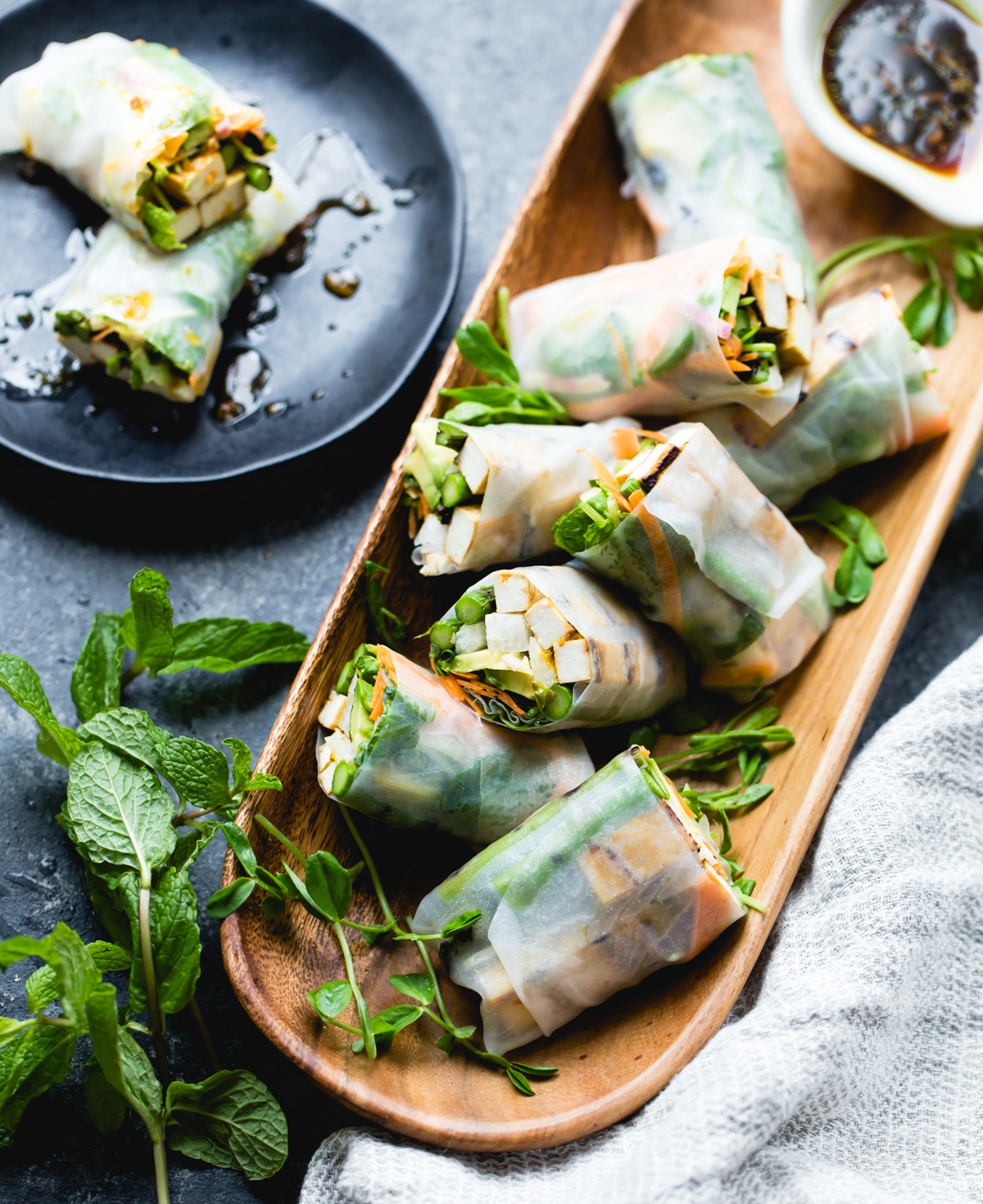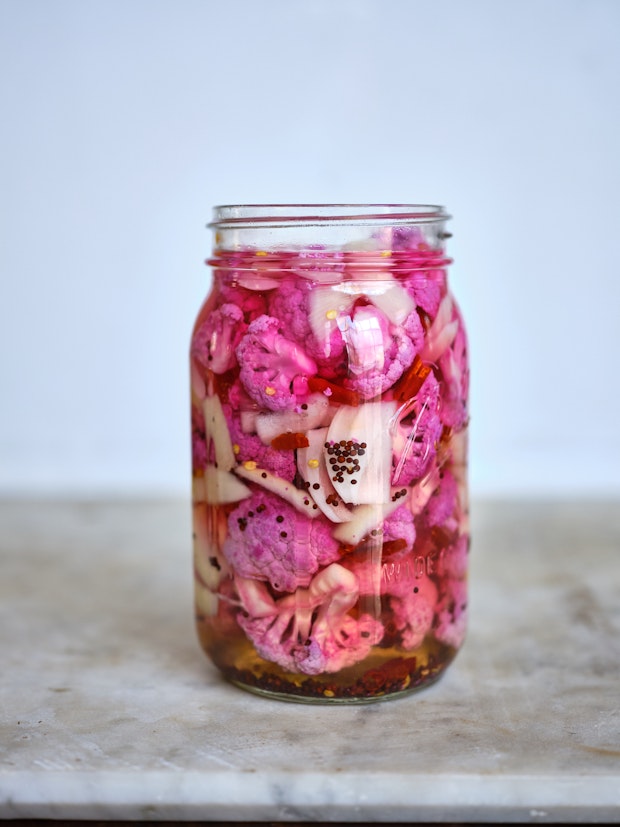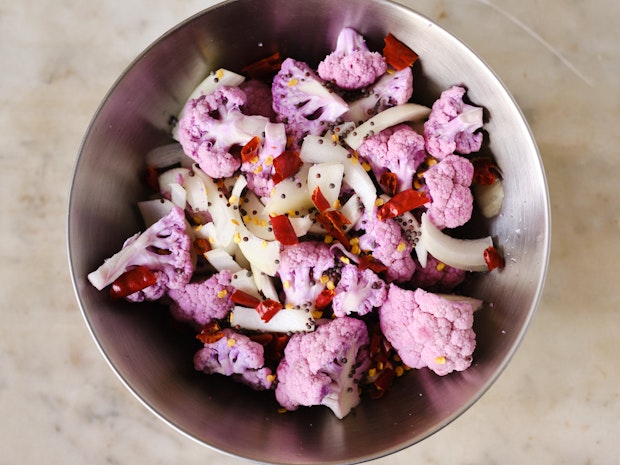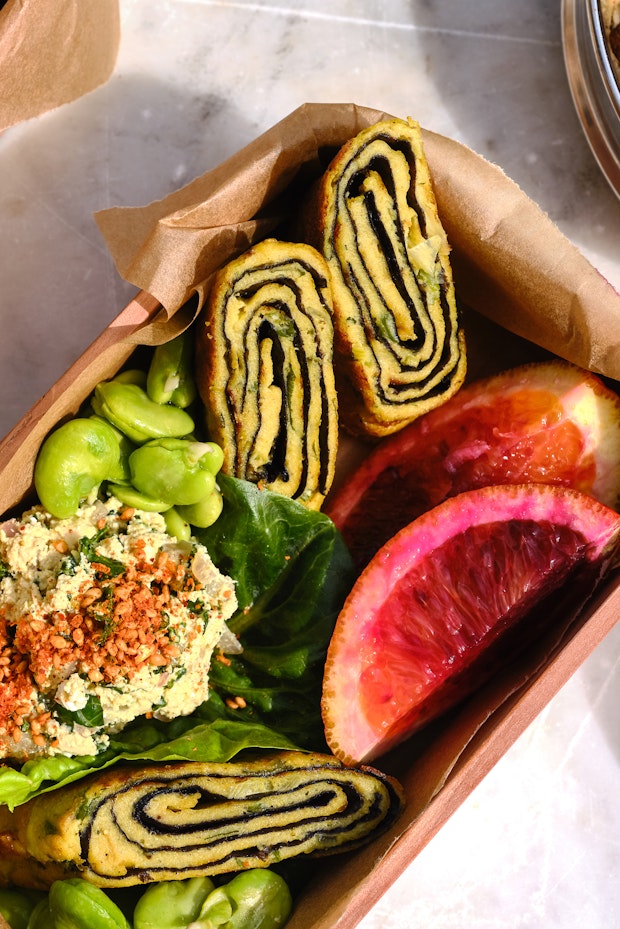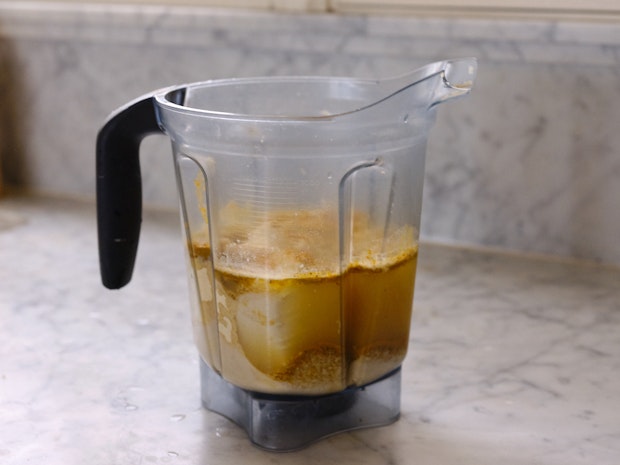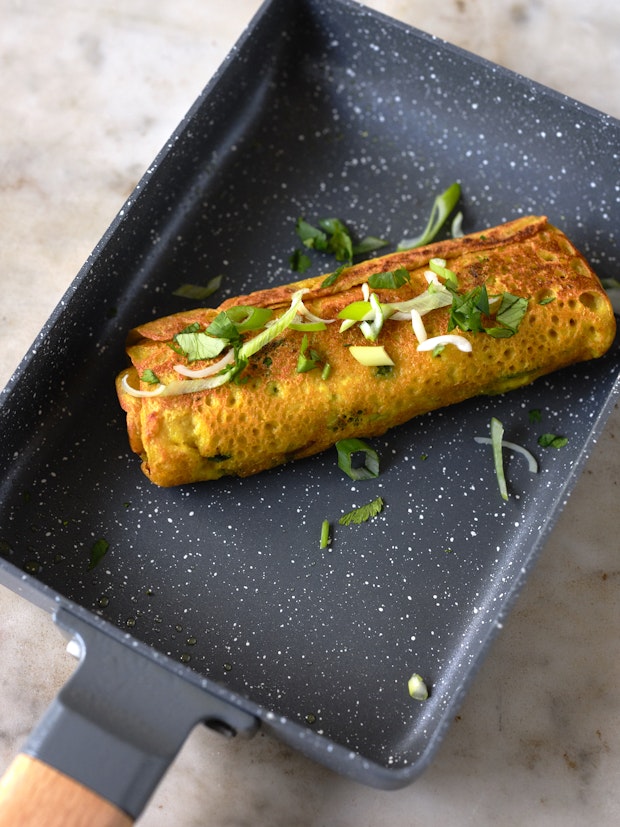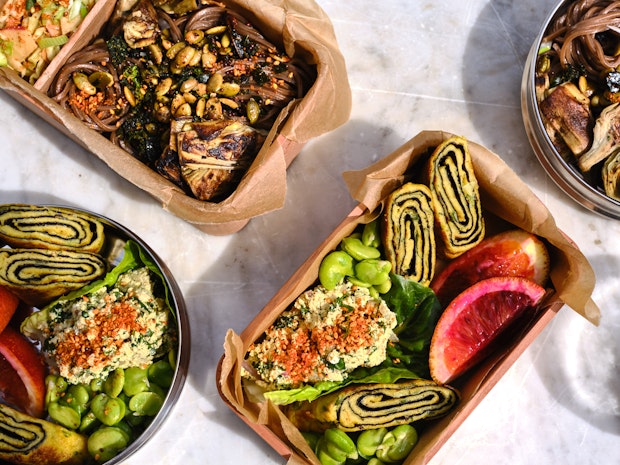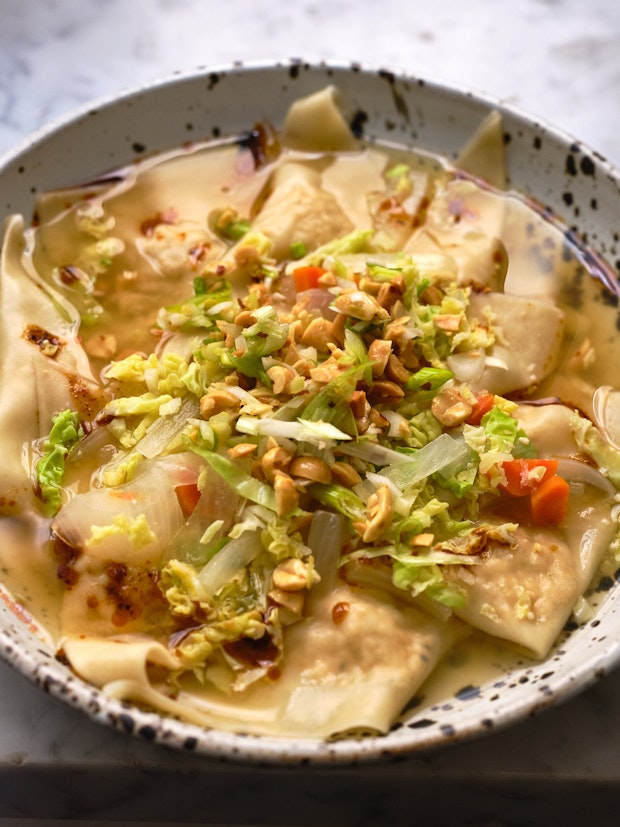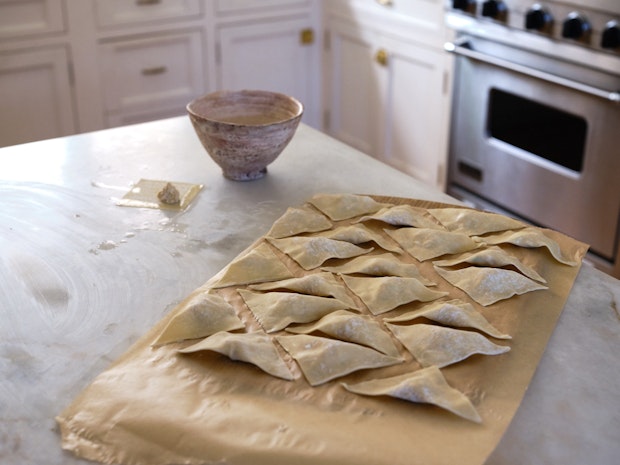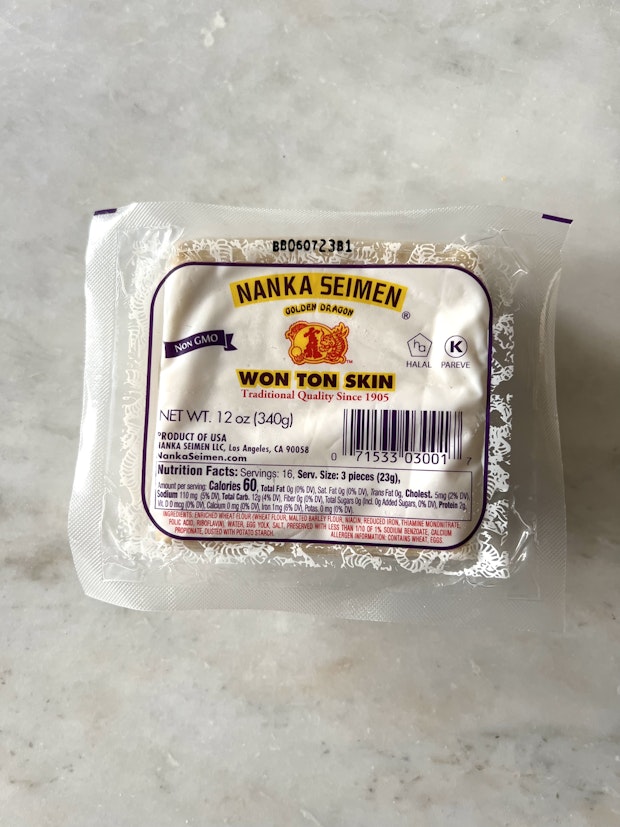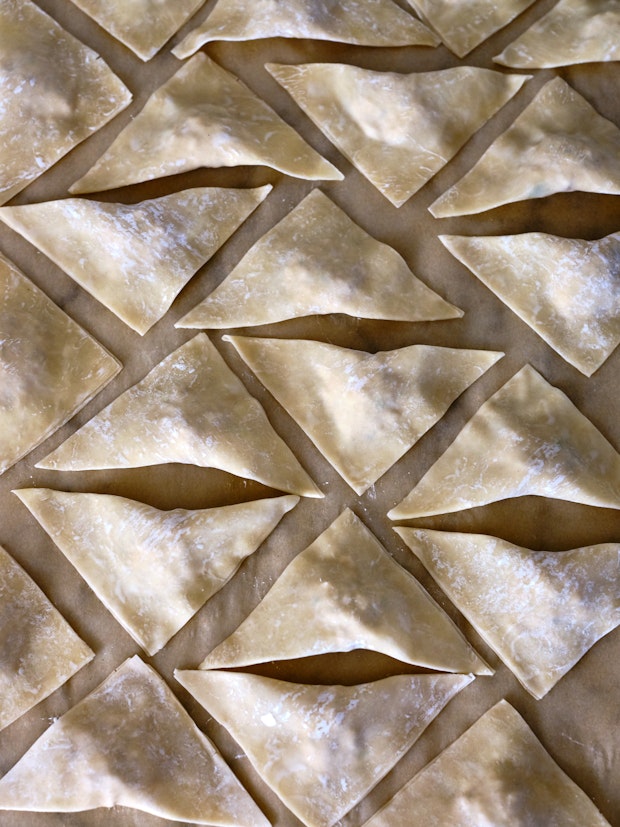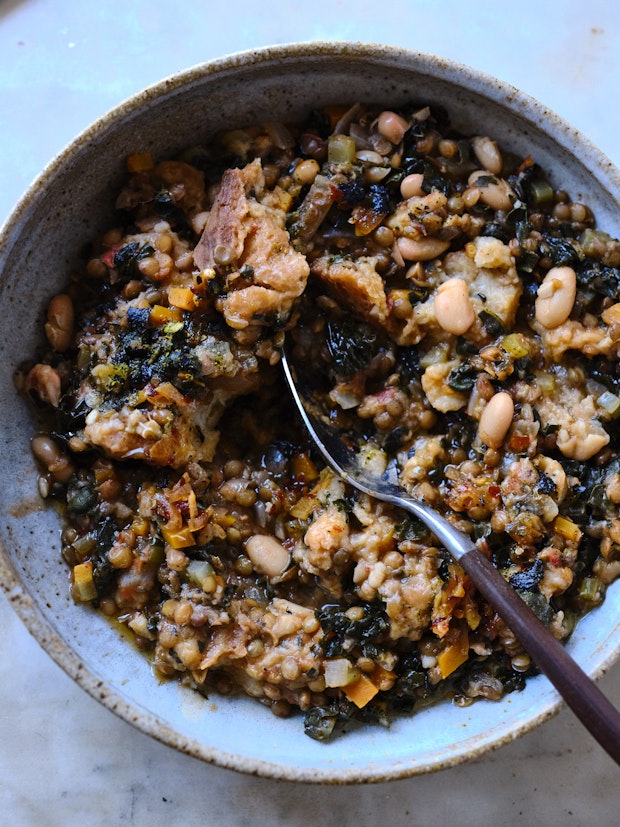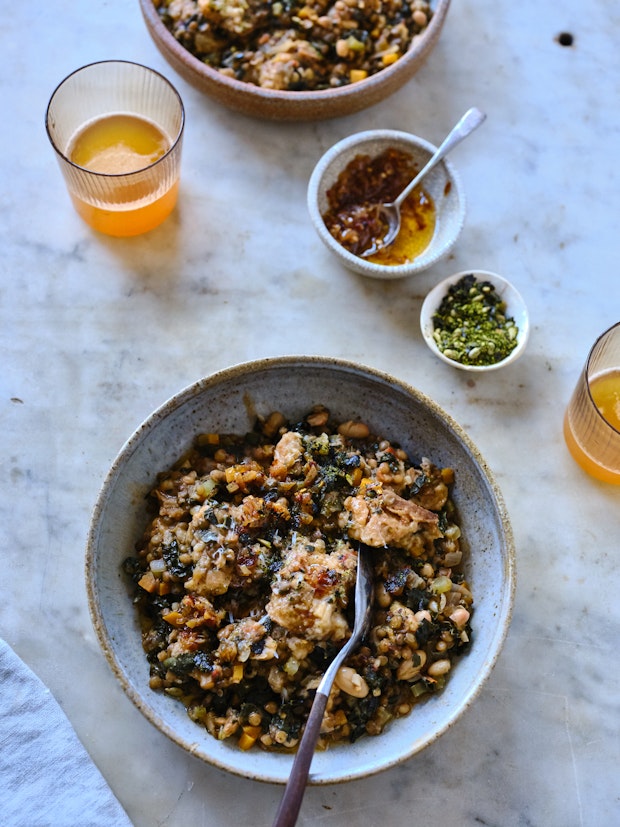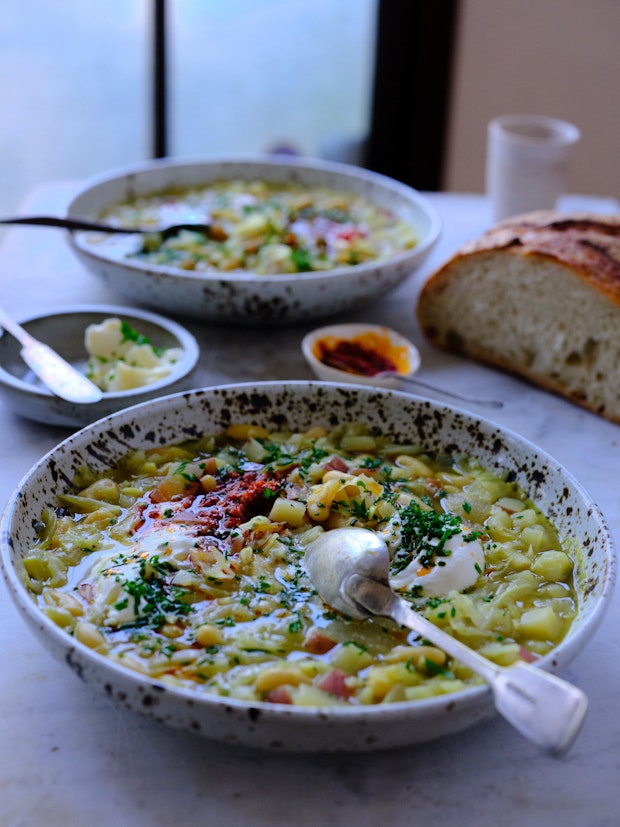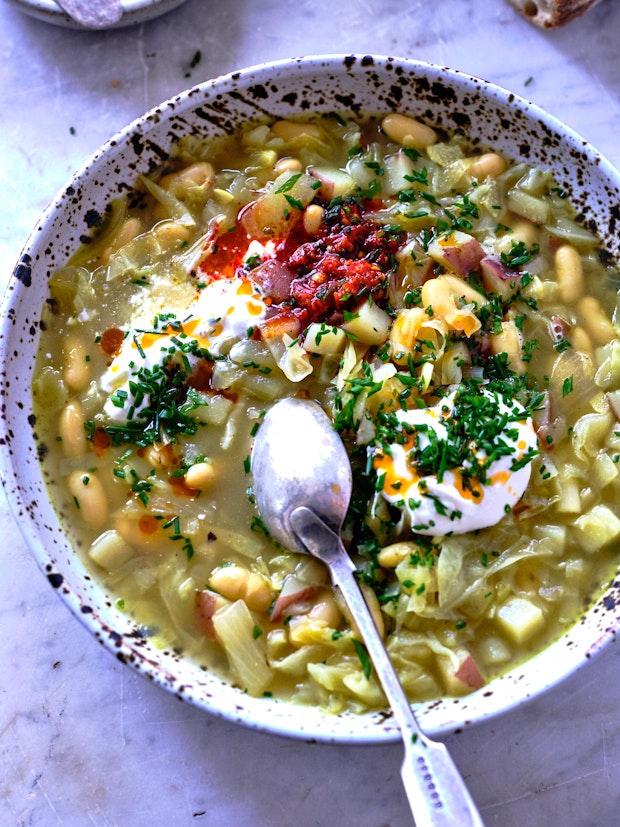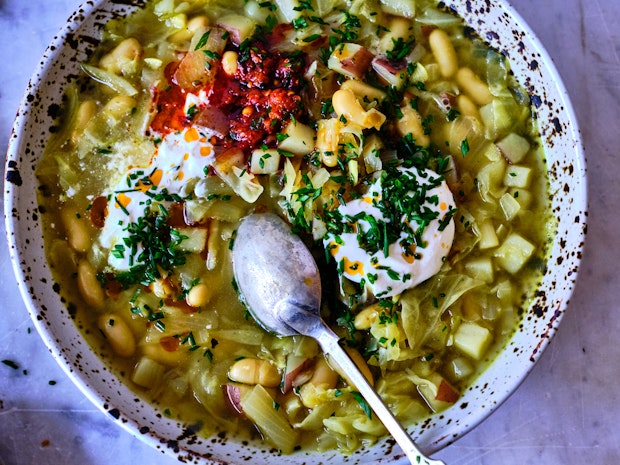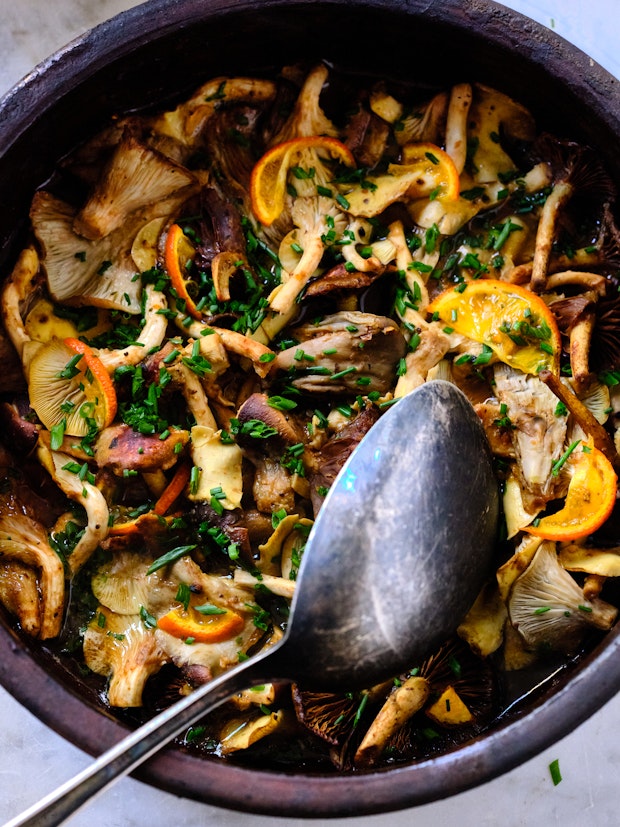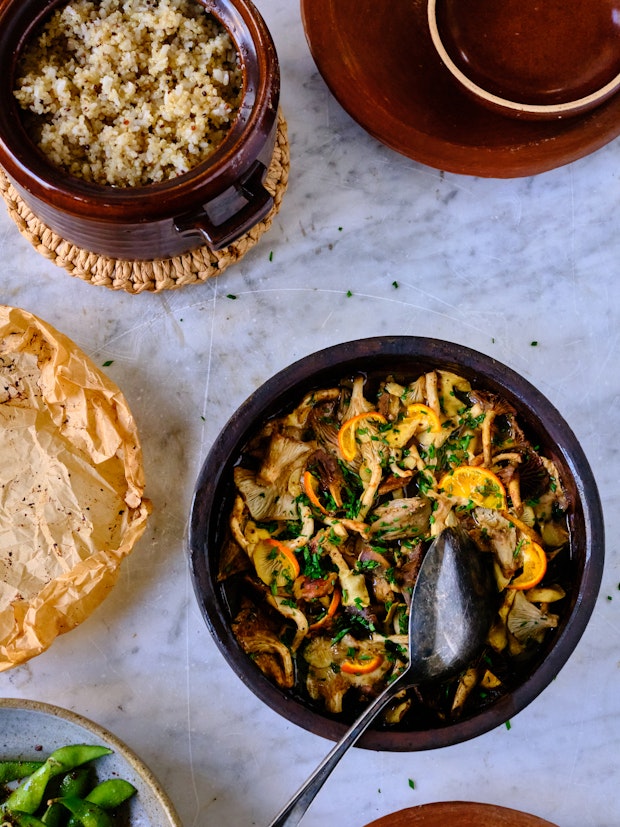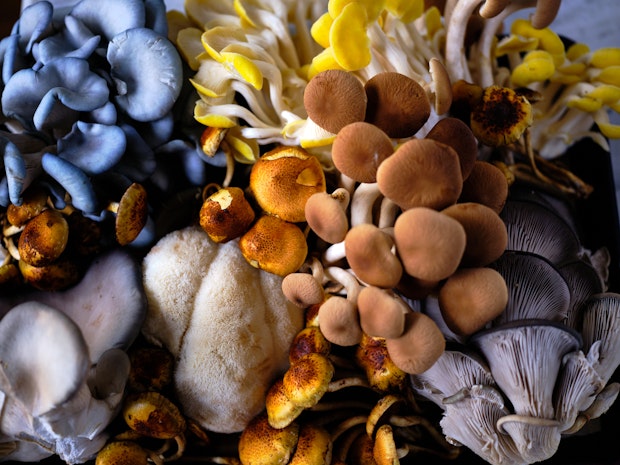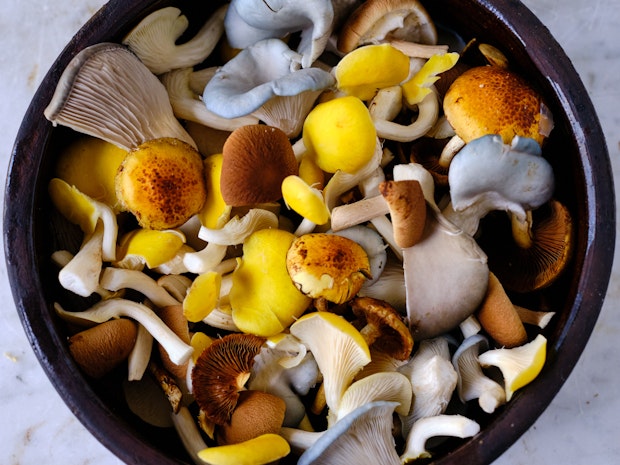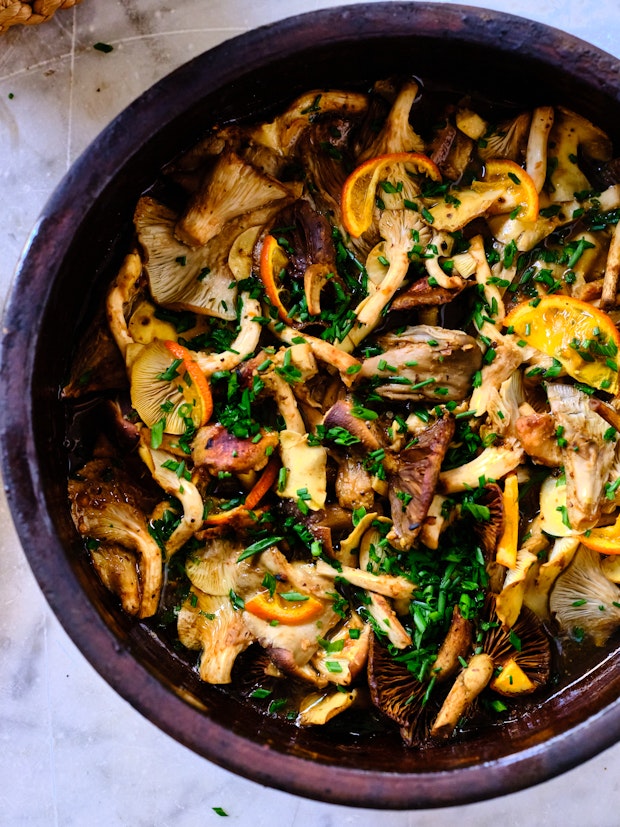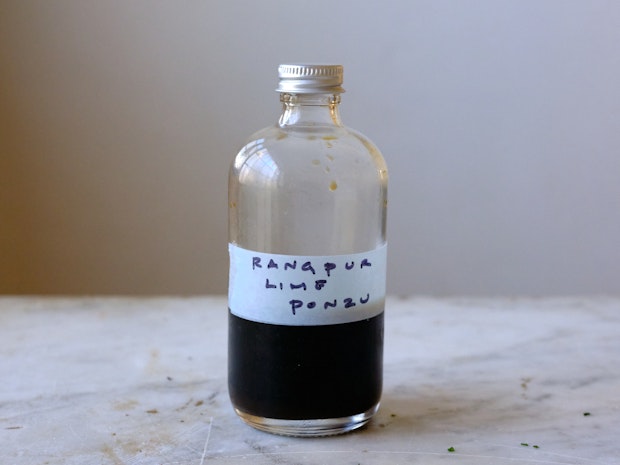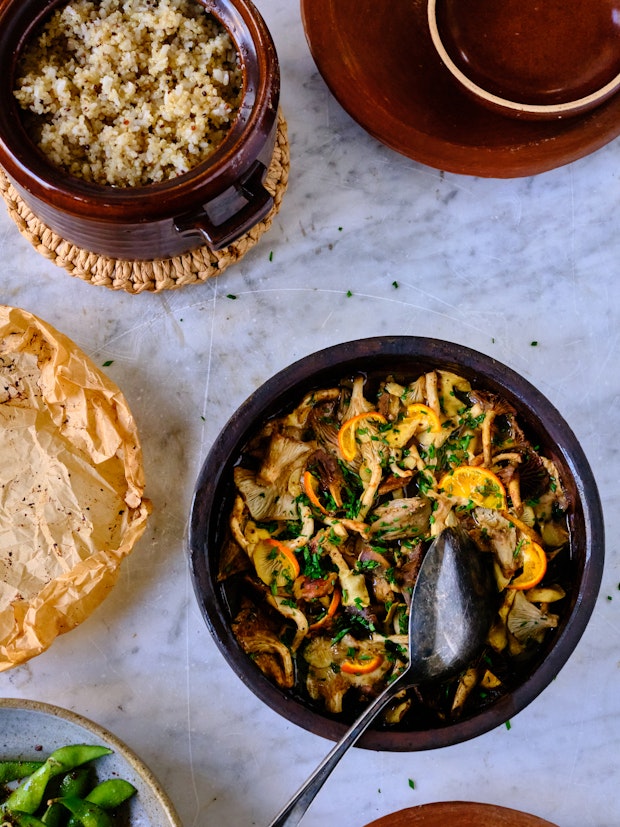One of the things I’ve been trying to be better about is lunches on-the-go. Coming up with inspired lunch ideas takes some effort. Often times, let’s be honest, it’s re-marketing leftovers. Too often, if we’re not going to be home for the day, we just wing it. And I’m nearly always sorry we didn’t make the effort to pack a good lunch. This is especially true if we’re on some sort of trip, towing the Airstream. Because on those days parking dictates where you’re lunching. And just thinking about it is making me cringe. So yeah, we’re trying to do better over here and I thought I’d share some recent wins.
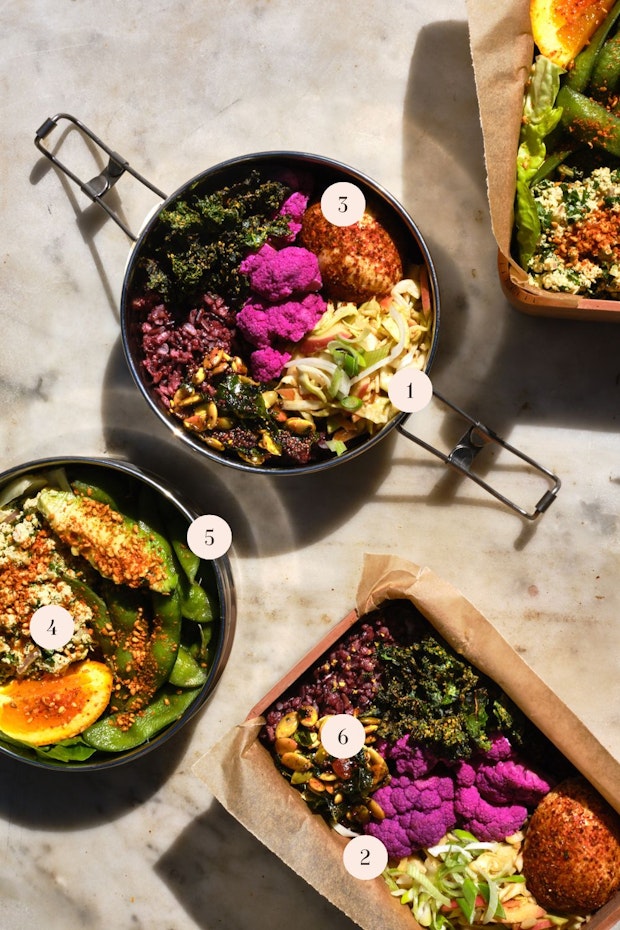
Lunch Ideas #1
These lunch boxes (above) came together pretty quickly. Nearly everything was a leftover, or component of a previous meal. To pull it together I peeled and chile-dusted the hard-boiled egg, sliced the avocado and sliced the mandarin.
1. Spicy Sesame Coleslaw: You’ve seen it before, you’ll see it again. Lol. It’s my favorite coleslaw, and I’ll basically tuck in anywhere. Feathery green and red cabbages along with carrots, apples, and scallions tossed with a spicy, creamy sesame dressing.
2. Pickled Cauliflower: The pop of color you need in your lunch. This quick pickled cauliflower delivers a good amount of tang and crunch in the midst of less structured components. I make mine with chiles, mustard seeds and slivered onion, but you can play around.
3. Chile-dusted Hard-boiled Egg: Here’s how to make these. Combine equal parts chile powder and MDH chana masala powder in a small bowl. I like to use this Kashmiri chillie powder, but use what you have (and like). Peel your egg, rinse it, dab it a bit on a clean towel to take off excess water, then roll it around in the spice mixture until completely covered. Slice and serve, or pack into lunch.
4. Turmeric-Scallion Tofu Spread: This is actually leftover wonton filling from my last round of wonton soup. But it’s also great as a lettuce wrap filling, cracker and sandwich spread, and on its own. Here, I nestle it into a stack of 2-3 little gem leaves. Get the recipe – it’s the first part of the recipe on this page, minus the wrappers.
5. Red-spiced Edamame: I’ll write this up as its own recipe soon, it’s a homemade spice blend made by crushing Kashmiri chillies, smoked paprika, brown sugar, sesame, dried onion flakes, salt, and a kiss of cardamom together. Sprinkle generously. There are a lot of other spice blend ideas in the Spice / Herb / Flower / Zest PDF that members get. Just about any of those are great here. Experiment!
6. Pepita & Curry Leaf Tadka: I’ve definitely over-stripped my young curry tree making this lately. Toast a cup of pepitas and set aside. Heat 2 tablespoons of oil in a small saucepan over medium-high heat, stir in 50-ish fresh curry leaves. Continue to stir and when the leaves begin to crisp up add 2 teaspoons black mustard seeds. Keep stirring and when the seeds have toasted a bit and stopped popping, add 1/2 teaspoon chile powder. Pour this over your pepitas, toss well, and salt to taste. good on everything, Including the soba in the next lunch.
Also: purple rice, sliced avocado, mandarin wedge, nutritional yeast kale chips
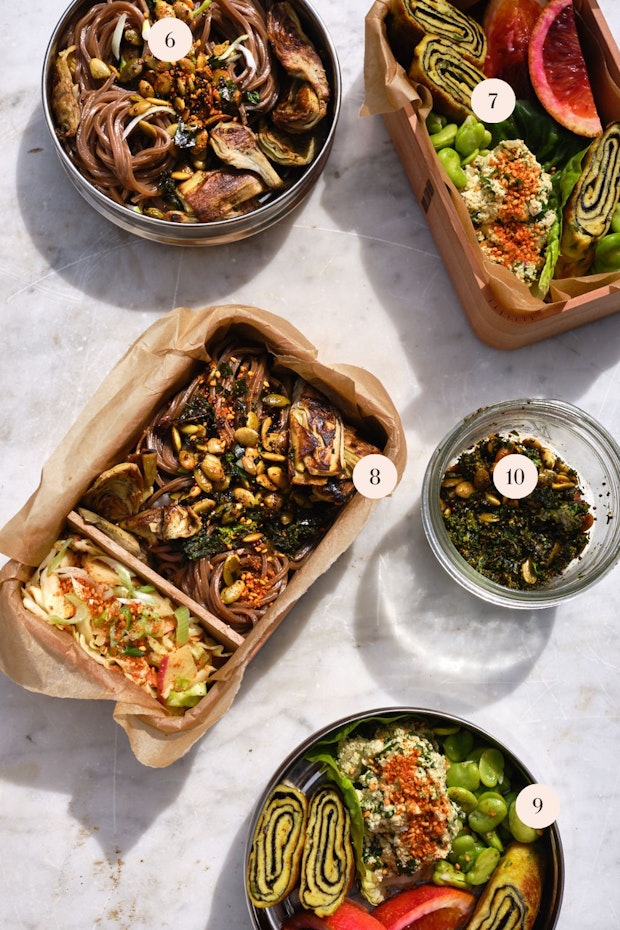
Lunch Ideas #2
The one component of the lunch boxes (above) that wasn’t made ahead of time, was the soba noodles. I boiled them, and ran them under cold water just before packing up.
6+. Soba with Pepita & Curry Leaf Tadka: The same pepitas as above (lunch ideas #1), this time tangled with cold soba.
7. Vegan Tamagoyaki: This is a vegan version of tamagoyaki, the much-loved Japanese rolled omelette. I like to make chickpea-tofu version, and this one is lined with nori and seasoned with scallions and herbs. They’re fantastic lunchbox heroes because you can make and roll them ahead of time. They’ll keep for a few day so you can slice and go.
8. Blistered Artichoke Hearts: Leftovers from dinner the previous night. I cooked these from frozen. So easy, so good. I wrote a long post about how to cook artichokes – both fresh and frozen. So, if you love artichokes, but think they’re too much work, read this. Same goes if you think the frozen ones are going to be bad. They aren’t and they’re great in scenarios like this one, quick pastas, casseroles, etc.
9. Fava Beans Tossed with Citrus Olive Oil: These are fava beans that have been shelled, boiled for a flash, shelled again, and then splashed with a bit of lemon olive oil, and tossed with a pinch of salt. From previous dinner. I do the same with edamame, but favas are in season and I they’re worth all the shelling and peeling drama.
10. Kale Chips: Some extra crushed kale chips tossed with the remaining pepitas. My method for epic kale chips is this: buy curly kale, make sure it’s dry if you recently washed it. Toss the kale with olive oil and scrunch it all up with your hands, be sure it’s all coated. Toss with a lot of nutritional yeast, get a good coating going. Season with salt and bake at 375F-ish until the chips at the edges start browning. Toss well. Continue to bake until crispy but still mostly green.
Also: blood orange wedges for dessert

A Couple Pro-tips
There’s actually just one main tip, but I’ll add more as I think of them. Line your bentos with parchment paper for easy clean-up. This isn’t as important with stainless steel containers, they clean up quite quickly. Bentos, often made of cedar, are a bit more fragile and take more care if you want them to last for many years. Also, clean up as soon as you get home. The reset is key to looking forward to your next special box lunch.
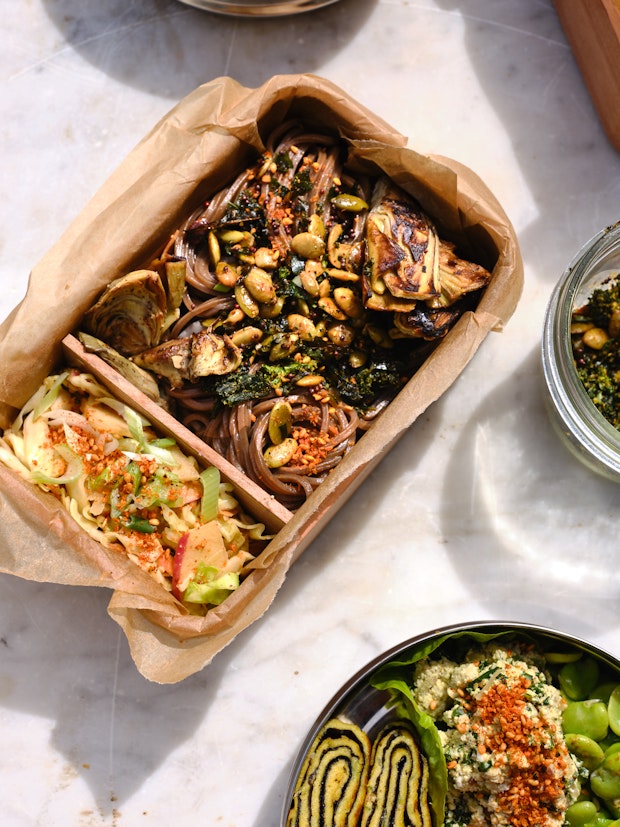
Favorite Lunchbox Containers
Bentos: I have (and love) my small collection of bento boxes. They’re beautifully crafted and fit the perfect amount of food. They often come with small dividers to create separation between food, but you can also use lettuce, or other small containers to divide things up.
Tiffins (or dhabbas): These containers have long been used in India to enable healthful, homemade meals outside the home. I have a circular, triple-stack stainless steel version I love for a number of reasons including durability, compactness, and security. The tiers nestle tightly making spills and accidents unlikely. I have my eye on a rectangular version as well.
Both bentos and tiffins have a tradition of enabling meals made with care and love. And continuing this tradition is something I try to channel when I’m packing a lunch for myself or someone I care about.
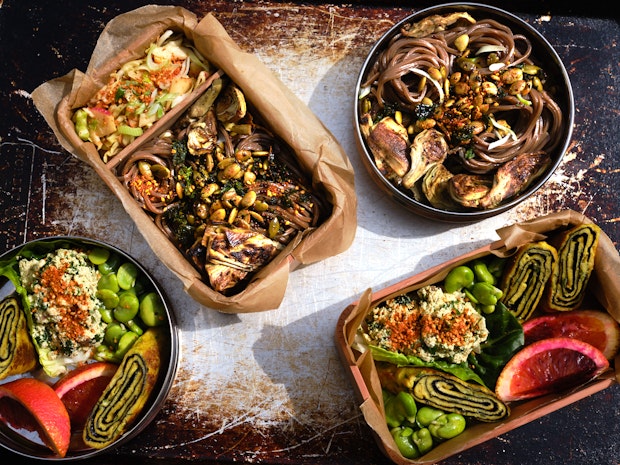
I don’t mind mixing different types of lunch containers. And sometimes I’ll make an individual lunch for each person, each in its own container. But, other times I think it’s fine to load up a few family-style containers and do it that way. I think that works great for components that can be more communal, like edamame, or a bunch of dumplings, a stack of paratha, vegan sushi or quesadillas, quinoa patties, etc.
Hot Lunch!
Use a thermos to bring hot miso soup or tea or rasam or whatever else you can think of. This is always the icing on the cake and unfailingly makes me happy (or happier!) When I really have things lined up, I’ll bring green tea, miso soup, or soba tea and a durable glass or two wrapped in cloth. Simply rewrap when you’re finished.
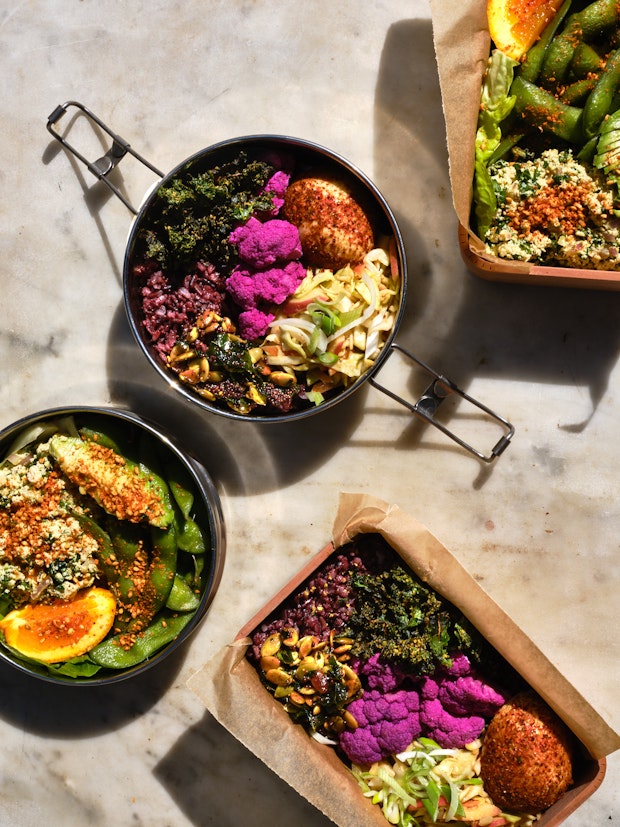
I hope this provides a bit of inspiration! It’s really wonderful to take a bit of time to sit down to a thoughtfully prepared, healthful homemade lunch and I’m never sorry about making the extra effort (in the long run). Even if it can make a morning a bit more demanding than usual, I know when I do it, I’ll eat better, feel better, and get excited about sitting down to lunch. Enjoy! -h
Continue reading Feel-good Lunch Ideas on 101 Cookbooks

